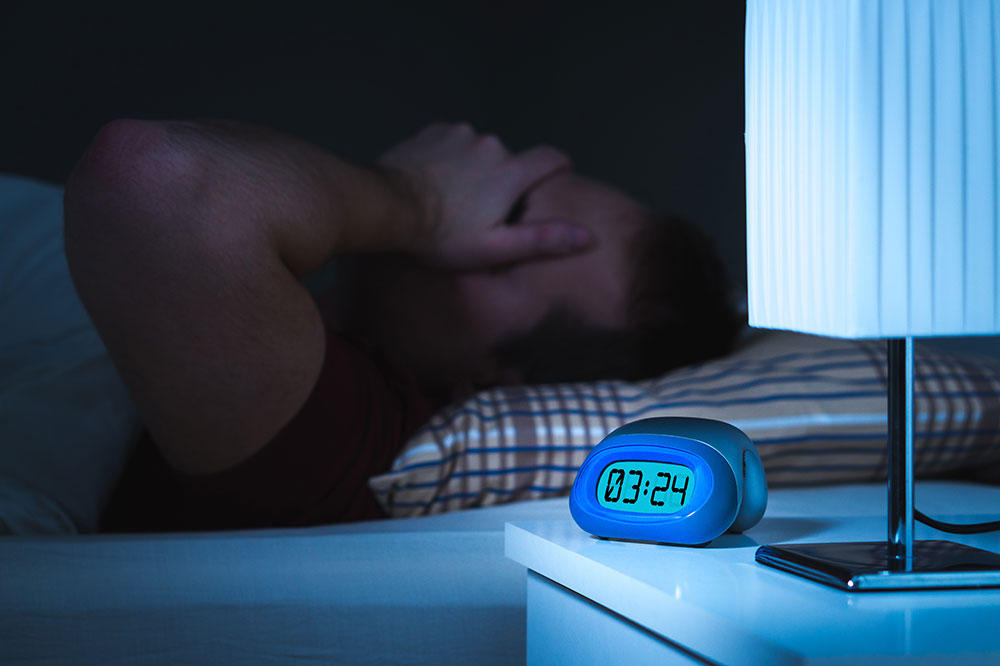Natural Relief for Sleep Apnea
While there are multiple options to treat your sleep apnea symptoms such as oral appliance therapy, Dr. Winkelmann also recommends certain mouth and throat exercises that you can implement into your daily lifestyle to enhance your sleep. Also known as myofunctional therapy, these exercises have been shown to improve the long-term effects of sleep-disordered breathing.
Practicing mouth and throat exercises while using an oral appliance can strengthen the relationship between your facial muscles. Read our guide to learn how you can practice these exercises at home to strengthen your muscles and help you get better rest.


Being Consistent With Myofunctional Therapy
Practicing myofunctional therapy by doing these exercises can help reduce the symptoms associated with sleep apnea and snoring. However, consistency is key. We recommend that you perform mouth and throat exercises for at least 10 minutes a day for three months. Try to do these exercises two to three times a day to achieve maximum effectiveness.
Similar to other exercises, it takes time to build your muscles, so you may not immediately notice the results. One major benefit of myofunctional therapy is that these exercises are simple enough to do almost anywhere, making it easier to fit into your routine.
Mouth & Throat Exercises for Sleep Apnea
Tiger Yell
For this exercise, open your mouth as wide as possible, similar to a tiger roaring. Rather than yelling, stick your tongue out as far as you can until it’s close to your chin. Hold this position for five minutes, or as long as you can, to strengthen the muscles in the back of your throat.
Touch Nose & Chin
First, stick your tongue out and try to touch your nose. This exercise will gradually strengthen your jaw even if you can’t reach your nose. Next, try touching your chin with your tongue. Try to hold each facial position for at least 10 seconds before you switch to the other one.
Tongue Slide
This exercise is highly effective in minimizing snoring. First, position the tip of your tongue behind your front teeth. Then slide your tongue back towards your throat, curling it at the same time. This will help strengthen the muscles throughout your throat and neck.
Soft Palate Stretches
The roof of your mouth (soft palate) also impacts your sleep apnea. For this exercise, start by closing your mouth and breathing in through your nose. Exhale and push the air out of your lips while keeping your mouth closed to cause your throat to push back and feel resistance.
Jaw Tension Relief
To relieve jaw tension, touch the roof of your mouth with the tip of your tongue. Keeping your mouth closed, start sliding your tongue back as far as you can. Then relax it while it’s still on the roof of your mouth and slowly open it. Hold this position for five seconds.
Frequently Asked Questions
When will my quality of sleep start to improve?
Practicing these mouth and throat exercises is similar to any other type of regimen. You won’t experience any results immediately, but your consistency will still count. Over time, as you begin to get used to doing these exercises regularly, you may begin to notice that your quality of sleep is better or that you’re more well-rested compared to past mornings. While it’s normal to notice improvements after a couple of months, this number varies based on your case.
Do I need oral appliance therapy if I just do the exercises?
While making certain lifestyle changes such as practicing myofunctional therapy can help, it’s recommended to pair it with professional treatments like an oral appliance to achieve the most effective results. During your initial consultation with Dr. Winkelmann, he’ll evaluate your sleep apnea symptoms and determine which combination of treatments and therapies can best improve the quality of your rest.
How can these exercises help with snoring and sleep apnea?
Muscles that relax too much in your airway can block the flow of oxygen, which then causes snoring and sleep apnea to develop. With myofunctional therapy, these exercises will gradually strengthen your mouth and throat muscles to improve the function of your airway. As a result, this can lower the severity of your snoring and sleep apnea over time.
What if I’m not consistent with doing these exercises?
Not being consistent with your exercises will cause it to take longer for you to improve your sleep apnea symptoms. That’s why it’s important to do these exercises on a daily basis in order to achieve the best results. To better remind yourself, our team recommends creating a specific notification on your phone or making a to-do list that includes doing these exercises. After you’ve been doing them for a while, they’ll become a part of your daily routine.
Relieve Your Sleep Apnea With Myofunctional Therapy
Certain mouth and throat exercises can improve your sleep apnea symptoms when paired with oral appliance therapy. To schedule a consultation with Dr. Winkelmann to see if you may benefit from myofunctional therapy, call our Wake Forest, NC office at (984) 237-1013 or fill out our online contact form below. We also serve patients who live in the Riverstone, Staffordshire, and Brooke Hollow, NC areas.
